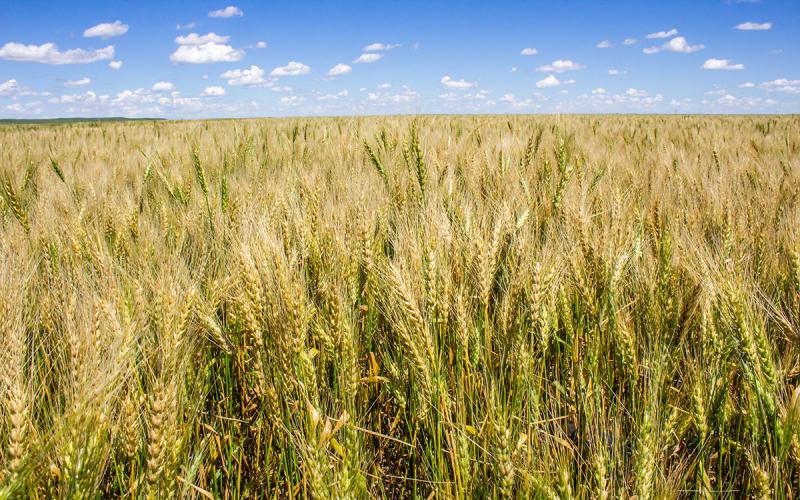Written collaboratively by Jason D. Clark, Péter Kovács, Jessica D. Ulrich-Schad and Anthony Bly
Over the last decade many advancements have been made in crop nutrient management and precision ag management. Currently, farmers have many precision ag technologies at their fingertips to help them make farm management decisions. These technologies range from the use of GPS to guide planting and spraying to using spatial information such as multiple layers (years) of yield information, field topography, and soil types to guide planting and fertilizing decisions. In fact, all these options may feel like an information overload to many farmers. The overall goals of SDSU Extension are to understand the current management practices farmers are using, identify information gaps, and then provide science-based information and training to fill the gaps. This information and training help farmers understand the “why” and “how to” of different management practices that can help them improve their economic profit while minimizing potential negative environmental effects. To best accomplish this work, Extension personnel need to know what nutrient management practices and precision agriculture technologies are used by farmers. Therefore, we developed a nutrient management survey, and disseminated it to approximately 3,000 farmers throughout South Dakota (SD) in June to July of 2019. The survey consisted of questions regarding past, current, and future nutrient management practices along with reasons for usage/non-usage. Questions were also asked concerning the source, rate, timing, and placement, of fertilizers and their applications. This survey information enables us to characterize local, regional, and statewide nutrient management practices. These nutrient management practices used in the different regions of SD will also be used as a baseline to compare against innovative management practices that will be developed over the next 5 to 10 years. This survey had two main objectives: 1) identify information farmers use to make fertilizer source, rate, timing, and placement decisions, and 2) determine the adoption rate of various fertilizer management practices that include the 4 Rs of nutrient management (Right: source, rate, timing, and placement).
Data from the 2019 survey South Dakota farmers was used to examine how local and operational characteristics such as geographic location within SD, tillage practice, and farm size were related to the adoption of various nutrient management practices. For use of starter fertilizer, we also evaluated farmer age and education level. For geographic location, the surveyed area (eastern portion of SD) was divided into two regions—eastern and central. This division is based on precipitation differences, with the eastern region (22–28 in.) receiving more annual rainfall than the central region (16–22 in.) (Fisichelli et al., 2016). Many farmers in SD are transitioning from conventional to conservation tillage practices. This transition has the potential to alter nutrient management practices. Therefore, we evaluated the relationship between tillage type used (no-till, reduced-till, and conventional tillage) and the chosen nutrient management practices. Lastly, farm size has been shown to be related to the adoption of conservation practices likely due to larger farms greater ability to spread out financial risks (Ulrich-Schad et al., 2017). Thus, we divided farms into four categories (1-499, 500-999, 1,000-1,999, and >1,999 ac) to determine their relationship with the chosen nutrient management practices. The number of farms within each combination of the location, tillage, and farm size groups is contained in Table 2. We also evaluated the relationship between farmer age (18-49, 50-50, and 60+) and formal education attained (college degree or not) on the use of starter fertilizer and its associated management practices (i.e., placement and rate). Descriptive analysis including percentages was conducted to provide information about various nutrient management practice usage among farmers. The results of this study are divided into six sections as follows:
- Section 1: Nutrient Management Survey Methods, Response Rate, and Data Analysis
- Section 2: Fertilizer Rate Decisions and Soil Testing Methods
- Section 3: Corn Starter Fertilizer Practices
- Section 4: Nitrogen Management Practices
- Section 5: Phosphorus and Potassium Management Practices
- Section 6: Sulfur and Other Micronutrient Management Practices
Acknowledgements
Research funded by the SD Nutrient Research and Education Council and NIFA Hatch projects SD000H676-18 and SD00H733-22. Authors appreciate responses of those farmers who filled out and returned our survey and graduate student Edem Avemegah for assisting in developing and implementing the survey and data cleaning.
References
Fisichelli, N.A., G.W. Schuurman, A. Symstad, A. Ray, B. Miller, M. Cross, and E. Rowland. 2016. Resource management and operations in southwest South Dakota: Climate change scenario planning workshop summary January 20-21, 2016, Rapid City, SD.
Ulrich-Schad, J.D., S. Garciá De Jalón, N. Babin, A. Pape, and L.S. Prokopy. 2017. Measuring and understanding agricultural producers’ adoption of nutrient best management practices. Journal of Soil and Water Conservation 72: 506–518. doi: 10.2489/jswc.72.5.506.


